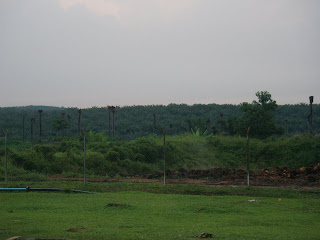Lyrics:
Verse 1:
On 1st June, we went to Johor.
Went to places and learnt a lot.
One place we went, was the wonderful Oil Palm.
It was very hot, and smelly too.
But we endured just to learn more,
see we so good, so must give us higher marks.
Bridge:
We shall tell you what we learnt in the chorus,
but for now let us introduce the Oil Palm.
It was introduced to Malaysia in 1910.
Chorus #2:
What we learnt were~
Stages of processing extraction of palm oil are:
1) Cleaning,
2) Steaming,
3) Sterilize,
4) Blend or Press,
5) Isolating,
6) and Vacuuming.
It is mainly used for cooking oil and cosmetics.
Verse 2:
Empty fruit bunch can be used for fertilizers and power generators.
Then we proceeded to the plantation
where we learnt how to know that whether
the trees are male or female ones,
and we learnt how to tell whether
the fruits are ripe or unripe
and how to harvest them with a pahat.
Chorus #2:
Actually we have learnt much more than this,
but we will stop here for now.
Hope you've enjoyed this geography song,
so it's goodbye... GOODBYE!
So on 1st June, we went to Johor... :D












































